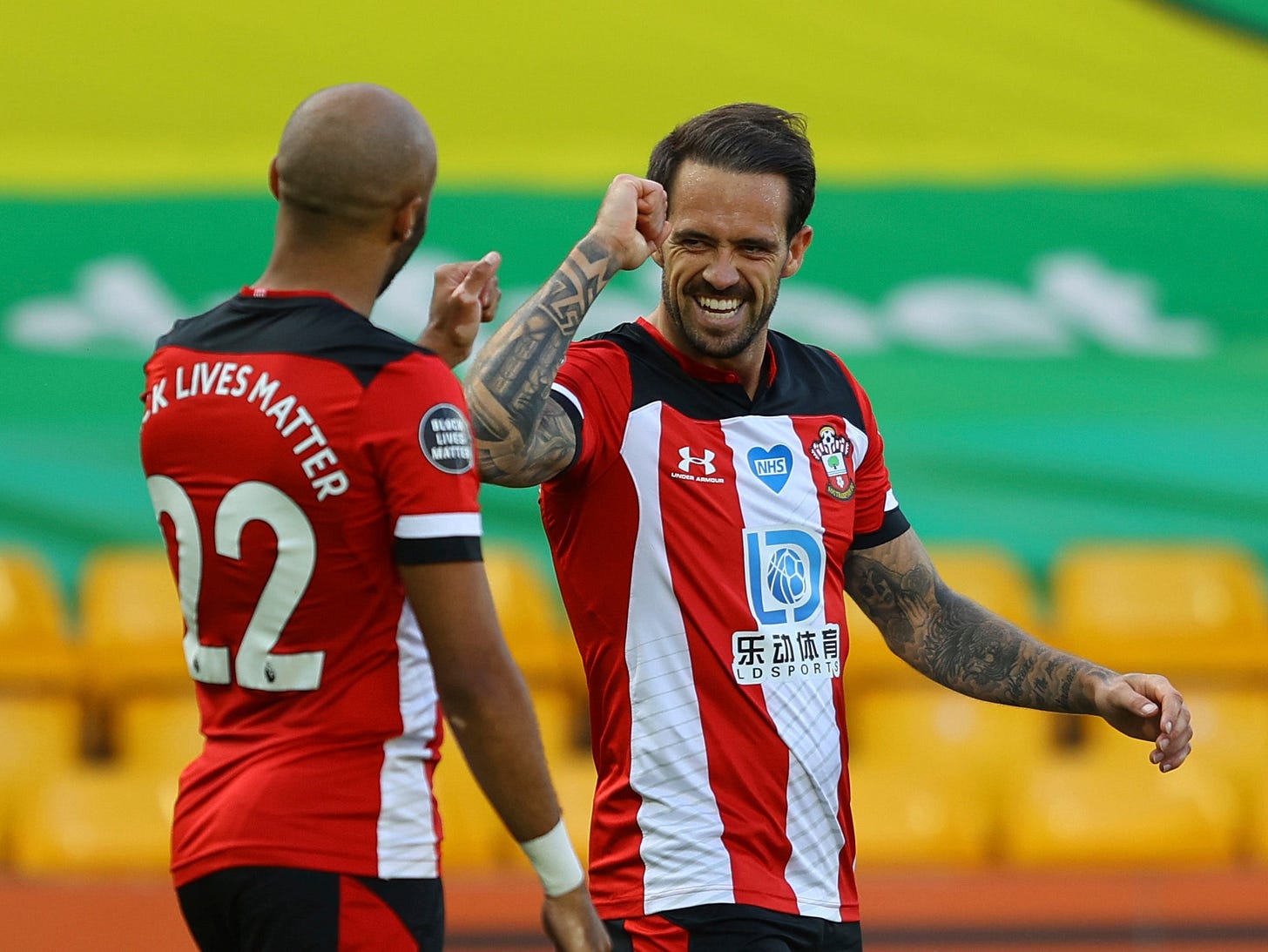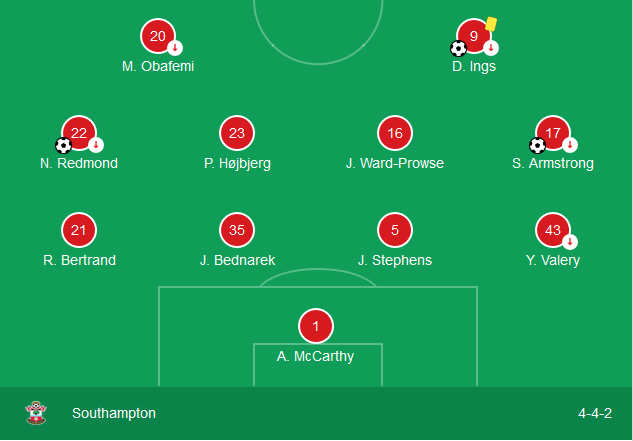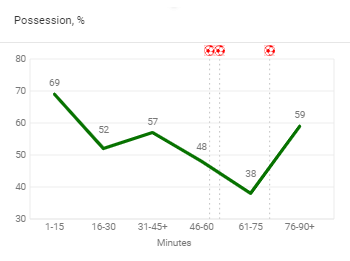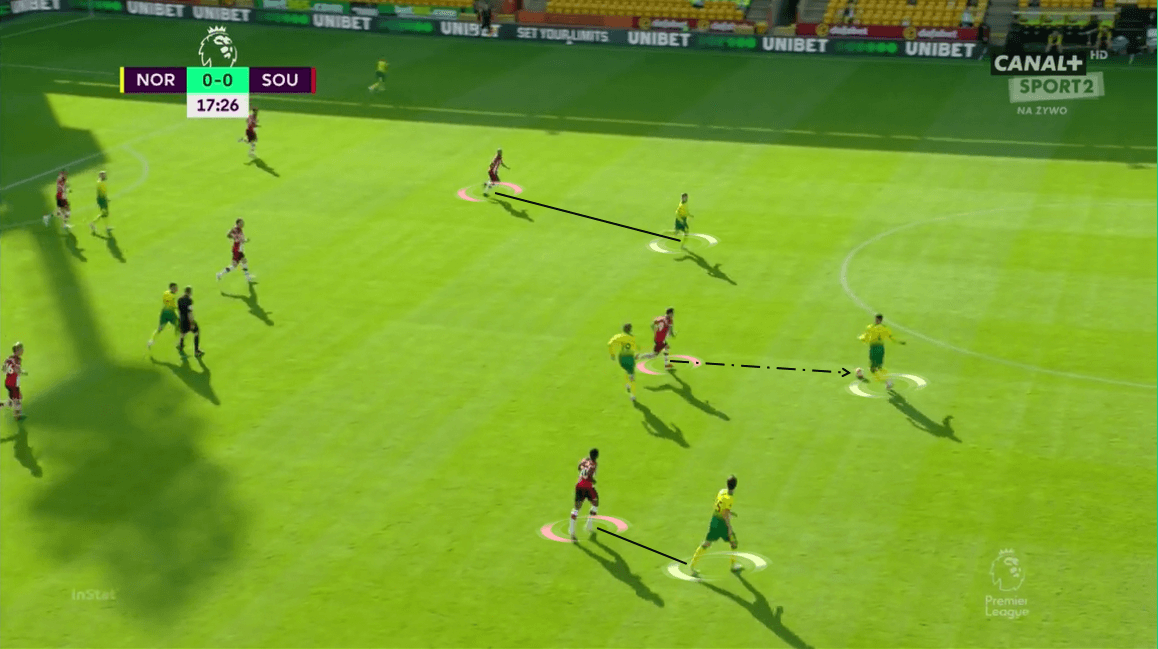[Match analysis] Norwich vs Southampton - Premier League - 19/06/2020
Ah, finally, football has returned. While it won’t be as fascinating as it used to be, the competitive spirit is still there, and it was demonstrated quite clearly with the first two matches of gameweek 30+ of the Premier League. Then comes Friday night football where Southampton traveled to Norwich’s Carrow Road for their first competitive match since the lockdown ends. This article will analyse how Ralph Hasenhüttl’s side came out of the match as comfortable winners over Daniel Farke’s side.
Lineups
While Norwich are known for their 4-2-3-1 formation under Farke, the German manager opted to go with a different system for this match, which was a 4-4-2. The home side entered this match having to face huge blows at their backline with Grant Hanley, Christoph Zimmermann, and Sam Byram all been ruled out for the remainder of this season.
This left Timm Klose, who hadn’t play for Norwich since August 2019, as the only fit centre-back to start alongside Ben Godfrey. Marco Stiepermann also missed out from this match after receiving a positive result for his test, which will force him to sit out for at least two weeks.
Meanwhile, Ralph did not change the team’s formation and remained to insist on using a 4-2-2-2 for this match. Southampton suffered a huge blow when Moussa Djénépo received a red card against Newcastle, which makes him unavailable for the next three matches. Nathan Redmond was chosen as Djénépo’s replacement while Sofiane Boufal was registered as a substitute alongside academy prospect Nathan Tella. A muscle injury kept Shane Long on the sidelines for this match amid he had returned to training, and he will be available for selection in Southampton’s next match against Arsenal.
How Southampton’s pressing contributed to Norwich’s build-up problem
While the first five minutes turned out to be very positive for Norwich, the home side were unable to contain the pressing threat from Southampton later in the game. Their possession percentage was higher than the opposition, which sits at 54.1%, and they even held more of the ball in the first half, as this possession graph shows.
Having gained the advantage of controlling the ball a lot more than their opposition, but Norwich could not create many chances towards Alex McCarthy goal, especially inside the first half. They only registered five chances during the first period, in which three of them were in the first ten minutes of the match. When a side could not create as many chances as they would have expected while keeping the ball more, the problem tends to lie at the backline and Norwich were not an exception either.
With Norwich opting to play out from the back, this allowed Southampton to engage their press and push their opposition back inside the defensive third. Both Klose and Godfrey struggled to pass the ball out of trouble and usually got stuck in circulating the ball among each other and Tim Krul. According to Instat, the centre-back duo made eleven passes towards the other one, Krul made 21 passes towards them and they linked up with the Dutch goalkeeper 26 times during the match. This showed how struggled Norwich were in finding a way to progress the ball and start an attack, and it hindered Buendía and Cantwell’s ability to create chances for the strikers.
For Southampton, they tended to overload the wide spaces, forcing Norwich to move the ball through the middle area of the pitch. The away side noticed the threat that might come from the overlapping wing-backs and the creative wingers. And this allowed them to put an emphasis on shifting their defensive shape towards both wings whenever Norwich attempted to play down the wide areas.
High up the pitch, the players were quite aggressive when recovering possession and they attempted to outnumber Norwich right inside their defensive third. As shown in the situation below, while Klose had three passing options available, he was unable to make a pass due to 2v1 marking situations were set by Southampton players. Eventually, the Swiss centre-back ended up making a failed dribble and conceded a throw-in for his team.
Southampton were able to react quickly whenever the opportunity arose for them was due to their pressing shape. Rather than sticking to their familiar 4-4-2, one winger, usually was Nathan Redmond, moved slightly forward to form a 4-3-3 formation. With two pacey attackers in Michael Obafemi and Redmond, it was possible for them to support Danny Ings and allowed the English striker to press the ball carrier. Another noticeable point from the game was the willingness to defend from Ings as he was very active in regaining possession for the side and cleared the ball when the team defended a set-piece situation.
Just one and a half minutes into the match, Ings made a crucial tackle to prevent Cantwell from converting his chance. With the match was close to the end, in the 82nd minute, Ings registered a clearance as Norwich attempted to cross towards the far post for Klose to pick up, but Ings said no, he wanted the clean sheet. Besides those moments, there were situations where it is possible to see the former Liverpool striker committed to winning the ball back, like the situation below.
Supported by Redmond and Obafemi by blocking Godfrey’s passing options, Ings attempted to run towards the Norwich’s centre-back and tackle the ball away from him. He succeeded, and it opened up a great counter-attack for Southampton, which he was quite unfortunate not to turn it into a goal.
How did Southampton deal with their problems?
First thing first, one question remained in the mind of many after the match, why did Farke decide to change the team’s formation from a 4-2-3-1 to a 4-4-2? Stiepermann’s absence had affected how the German manager picked his team to play in this match. Still, Farke noticed an obvious defensive problem that Southampton have faced in their last several matches before the lockdown.
Southampton’s defence haven’t coped very well when playing against teams who line up with two strikers, most noticeably, against West Ham and Burnley. Farke mentioned about the problem in his post-match interview with The Athletic, stating “the pressing of Southampton is good and sometimes you have to overplay their pressing with a chipped ball, then you need a player up front who is able to win a header, to keep the ball with the back to the opponent’s goal”. They definitely knew about it, but, unfortunately, they couldn’t capitalise that to create chances.
Firstly, both Pukki and Drmić are not tall strikers to receive direct passes from the backline. Their heights are 1.8m (5’90”) and 1.82m (5’97”) respectively, compared to Stephens’ height of 1m85 (6’06”) and Bednarek’s height of 1.9m (6’2”), it’s clear that they already had an advantage in winning aerial duels. Indeed, as they only registered two aerial duels won throughout the whole match amid Drmić’s effort to involve in eight.
Secondly, as mentioned earlier, both centre-backs were struggled to even pass the ball out of their defensive third due to Southampton’s aggressive pressing. The difference that brought West Ham and Burnley three points was the fact that they did not focus on playing out from the back and looked to pass the ball directly from goal-kicks to either flank. Norwich were different as they chose to play out from the back and that invited Southampton players to overload the defensive third.
From the graph below, it is possible to notice that Norwich had attempted to capitalise Southampton’s right-hand side like the two mentioned teams. But while they managed to get the ball over the opposition’s half for several times, they also had numerous attempts trying to get the ball wide from inside their half. It is clear that they were out of ideas to progress the ball forward and found themselves struggling to get the ball down both wings.
Farke was desperate trying to find another solution, even when Southampton were 2-0 up after the half-time. At times, they attempted to rely on players’ positioning to get the ball into the area, similar to the situation below. One of the attackers would drift inwards in order to create space out wide for Max Aarons or Jamal Lewis to overlap into. From there, they would receive the ball from the midfielders and continued to run towards the final third. The problem with this strategy was Southampton’s quick transitioning to outnumber Norwich and they managed to neutralise the threat quite comfortably.
In the second half, Farke introduced Onel Hernández onto the field with the intention of playing a 3-4-1-2 with Buendía sat in between the channels and Lewis dropped back as the left centre-back. They remained to insist on attacking down the left-hand side, knowing that Yan Valery would struggle to deal with pressure from both Lewis and Hernández.
On the other hand, Ralph did not adjust the team’s tactic until the match headed towards the last ten minutes. It was a risky move given that Norwich constantly changed their shape trying to find a way to progress the ball into the final third. Still, his instruction of overloading the wide space whenever Norwich had the ball in that area worked out well for them and contributed to the team’s effort of keeping a clean sheet.
The tale of two ends
At one end of the pitch, Norwich found themselves struggled to break a resilient and disciplined defensive shape, which prevented them from creating more than ten chances towards Southampton’s goal and hit the target once. At the other end, that number from Southampton was doubled and they continuously causing troubles for Krul and Norwich’s defenders throughout the match.
Winning the ball high up the pitch was just one of the ways that the away side created their chances and it benefitted them quite heavily. Furthermore, they also relied on players’ positioning and dribbling to progress the ball forward in a quick fashion, especially when Norwich players were caught in a counter-attack. A perfect example of Southampton’s counter-attack in the game was the build-up occurred just before Stuart Armstrong’s goal.
When Ings had the ball in the middle of the field, he had three players in front of him ready to receive the ball from him. Still, notice Obafemi and Redmond’s movements as they teamed up with each other to attract Klose’s attention from Armstrong. Obafemi started first by continuing to drift in between Godfrey and Klose and opened the right-wing for Armstrong. Redmond picked up that idea when the Irish striker moved into an offside space and allowed Ings to find the former Celtic midfielder with ease.
Armstrong also went close to score the opening goal inside the first half as Southampton demonstrated a well-executed corner. The away side started off having Armstrong and Bertrand lurking outside of the box and Redmond went close to Ward-Prowse to offer a short option. In the shot below, notice how the remaining players positioned right in front of the 6-yard box and waited for Bertrand’s dummy run as a signal to push Norwich players towards the area in front of the goal. This left a huge gap for Armstrong to receive the ball and he took a low shot towards Krul, which the Dutch goalkeeper caught quite comfortably.
Space was obviously a problem for Norwich in this match as on more than one occasion, Southampton managed to exploit unoccupied gaps to create chances for themselves. This situation was one of them and it showed Norwich’s major defensive problem of not being able to make a tackle to win back the ball. Redmond was already being surrounded by five Norwich players, in which two of them were able to tackle the ball, but they opted not to. Meanwhile, the lack of awareness from Buendía allowed Bertrand to cut inside as he made himself available to pick up the ball from Redmond and opened up a chance for Ward-Prowse later on.
Southampton’s first two goals were quite identical to this situation where Norwich players could not execute a tackle to win the ball back. They found themselves surround Southampton players in both situations and attempted to block possible passing lanes. Still, Ings and Armstrong were managed to shake off that pressure to produce a shot that were unstoppable for Krul.
Conclusion
It will take time for every team to back to their top form once again, but, at the end of the day, the return of football has received a warm welcome from the fans. Eight matches are left in the Premier League and teams still have their own goal to fight for, including Norwich and Southampton.
Three points at Carrow Road on Friday evening is thoroughly deserved for the away side and it helps them move close to the 40-point safety mark while allowing Ralph to think about the next season. Meanwhile, Norwich will have to look for that crucial six points from the remaining nine fixtures; but with four out of six “big 6 teams” waiting for them, it will be a tough journey for Farke’s side to survive relegation.














